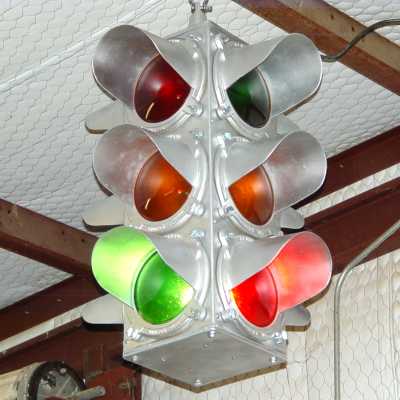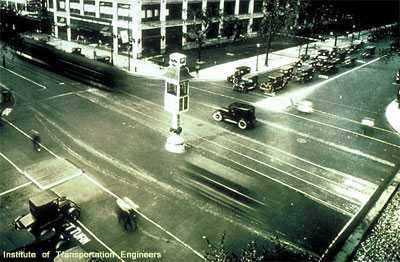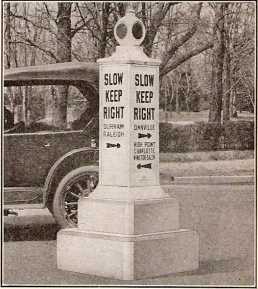Willis Lamm's
|
| History of Traffic Signal Design |
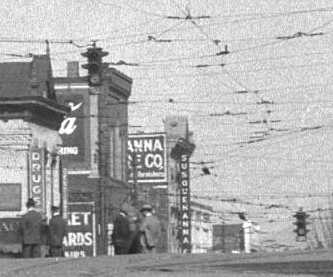
|
Control of traffic has been an issue in larger cities for centuries. Even before motor vehicles, police had to keep the movement of horse drawn vehicles, streetcars and pedestrians safe and orderly. Typical traffic control was provided by police officers who wore white gloves and blew whistles.
In 1868 illuminated traffic signal was installed in London near the Houses of Parliament. It was designed to aid the traffic policeman there, particularly during hours of darkness when visibility was poor. The device had semaphore arms to signal drivers and pedestrians during the day and it had red and green lenses illuminated by gas for viewing at night. The police officer would turn the signal 90 degrees to position the semaphore arms and the colored lenses towards traffic as needed. This was the first recorded use of illuminated red and green colors to control traffic. Unfortunately the device exploded in January of 1869, injuring the policeman that was operating it. This particular idea was not tried again.
In 1912 Salt Lake City, UT police detective Lester Wire built a two-color traffic signal that used electric illumination. In 1914 the American Traffic Signal Company installed two-color signals in Cleveland, Ohio. As with the London gas powered signal, these devices were designed to assist traffic police at busy intersections. When the police officer signaled for a change in traffic movement, he would also change the color of the lights illuminated in the signal device.
While the few traffic signals that already existed displayed only red and green colors, Potts' added a yellow "caution" interval to warn motorists that the traffic signal was changing. This idea turned out to be significant. |
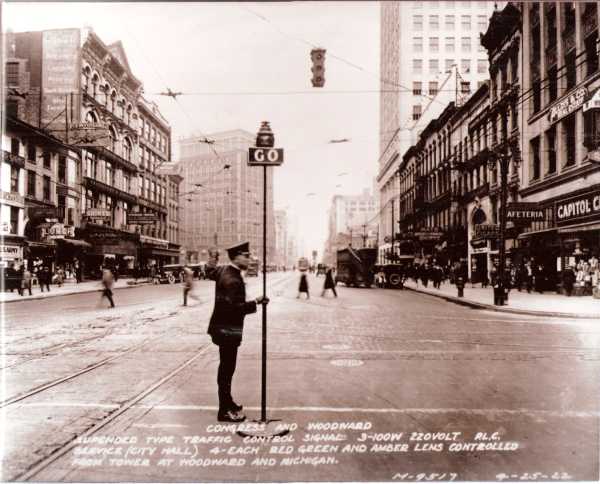
A traffic tower in Detroit.
|
Acetylene beacon made by the
|
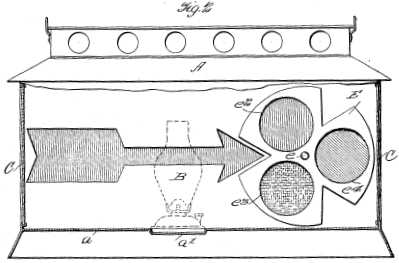 US Patents for traffic control devices date back as early as 1909. Most of these devices involved semaphores or arrows to direct traffic, however a few included some kind of illumination source and lens systems that were similar to those used by the railroads.
US Patents for traffic control devices date back as early as 1909. Most of these devices involved semaphores or arrows to direct traffic, however a few included some kind of illumination source and lens systems that were similar to those used by the railroads.
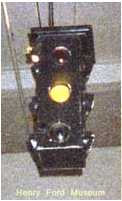 In 1920 William Potts, a Detroit Traffic Police Superintendent, designed the first 4-way three-color traffic control device that is recognized as the basis for the modern traffic signal. Potts built what was basically a rectangular box that was divided into three stacked chambers. Each chamber was illuminated by a single bulb. Railroad signal lenses were affixed on each side of each chamber and the signal was suspended from a cable so it could be more readily seen by traffic.
In 1920 William Potts, a Detroit Traffic Police Superintendent, designed the first 4-way three-color traffic control device that is recognized as the basis for the modern traffic signal. Potts built what was basically a rectangular box that was divided into three stacked chambers. Each chamber was illuminated by a single bulb. Railroad signal lenses were affixed on each side of each chamber and the signal was suspended from a cable so it could be more readily seen by traffic.
